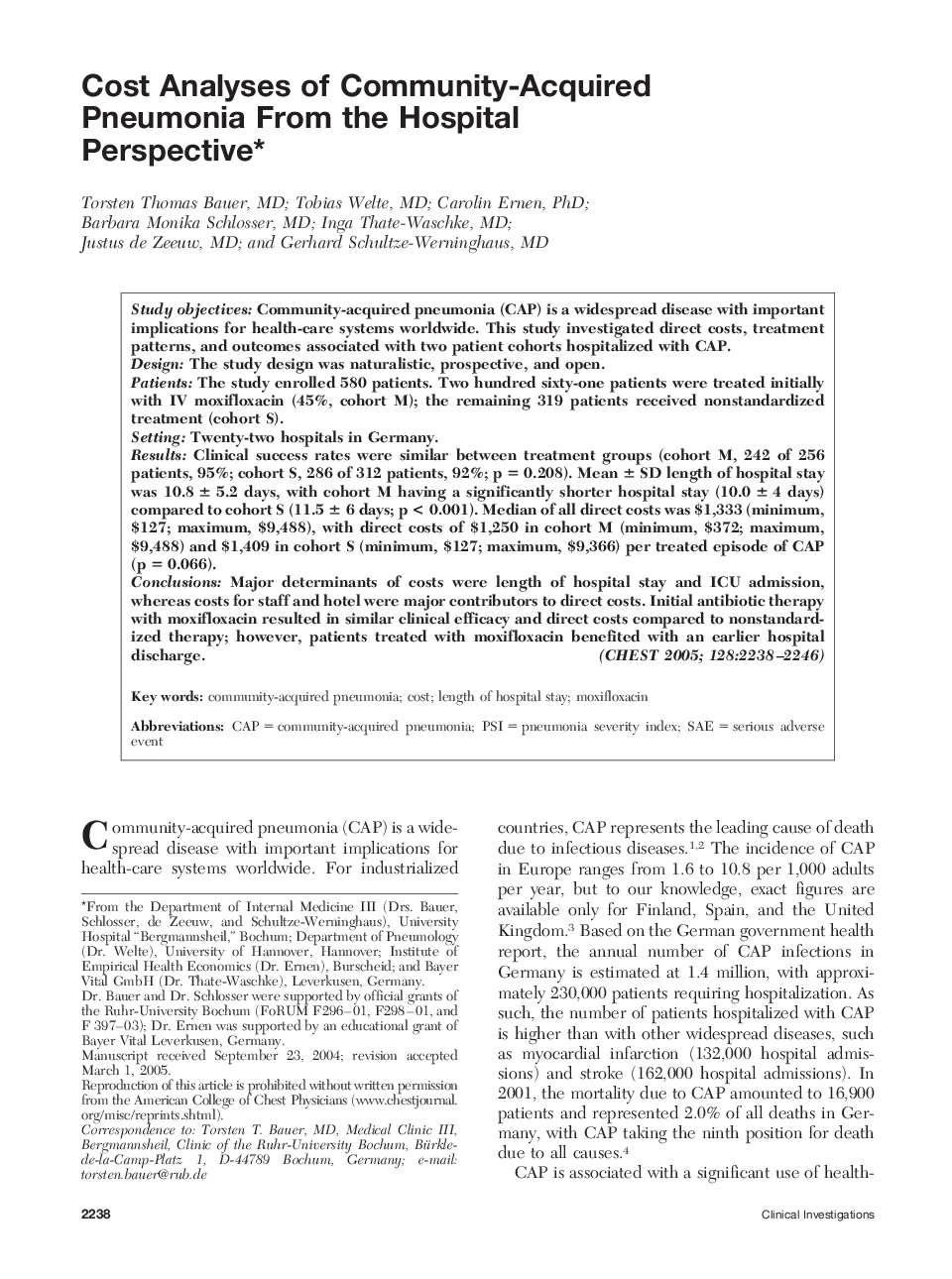| Article ID | Journal | Published Year | Pages | File Type |
|---|---|---|---|---|
| 2907106 | Chest | 2005 | 9 Pages |
Study objectivesCommunity-acquired pneumonia (CAP) is a widespread disease with important implications for health-care systems worldwide. This study investigated direct costs, treatment patterns, and outcomes associated with two patient cohorts hospitalized with CAP.DesignThe study design was naturalistic, prospective, and open.PatientsThe study enrolled 580 patients. Two hundred sixty-one patients were treated initially with IV moxifloxacin (45%, cohort M); the remaining 319 patients received nonstandardized treatment (cohort S).SettingTwenty-two hospitals in Germany.ResultsClinical success rates were similar between treatment groups (cohort M, 242 of 256 patients, 95%; cohort S, 286 of 312 patients, 92%; p = 0.208). Mean ± SD length of hospital stay was 10.8 ± 5.2 days, with cohort M having a significantly shorter hospital stay (10.0 ± 4 days) compared to cohort S (11.5 ± 6 days; p < 0.001). Median of all direct costs was $1,333 (minimum, $127; maximum, $9,488), with direct costs of $1,250 in cohort M (minimum, $372; maximum, $9,488) and $1,409 in cohort S (minimum, $127; maximum, $9,366) per treated episode of CAP (p = 0.066).ConclusionsMajor determinants of costs were length of hospital stay and ICU admission, whereas costs for staff and hotel were major contributors to direct costs. Initial antibiotic therapy with moxifloxacin resulted in similar clinical efficacy and direct costs compared to nonstandardized therapy; however, patients treated with moxifloxacin benefited with an earlier hospital discharge.
